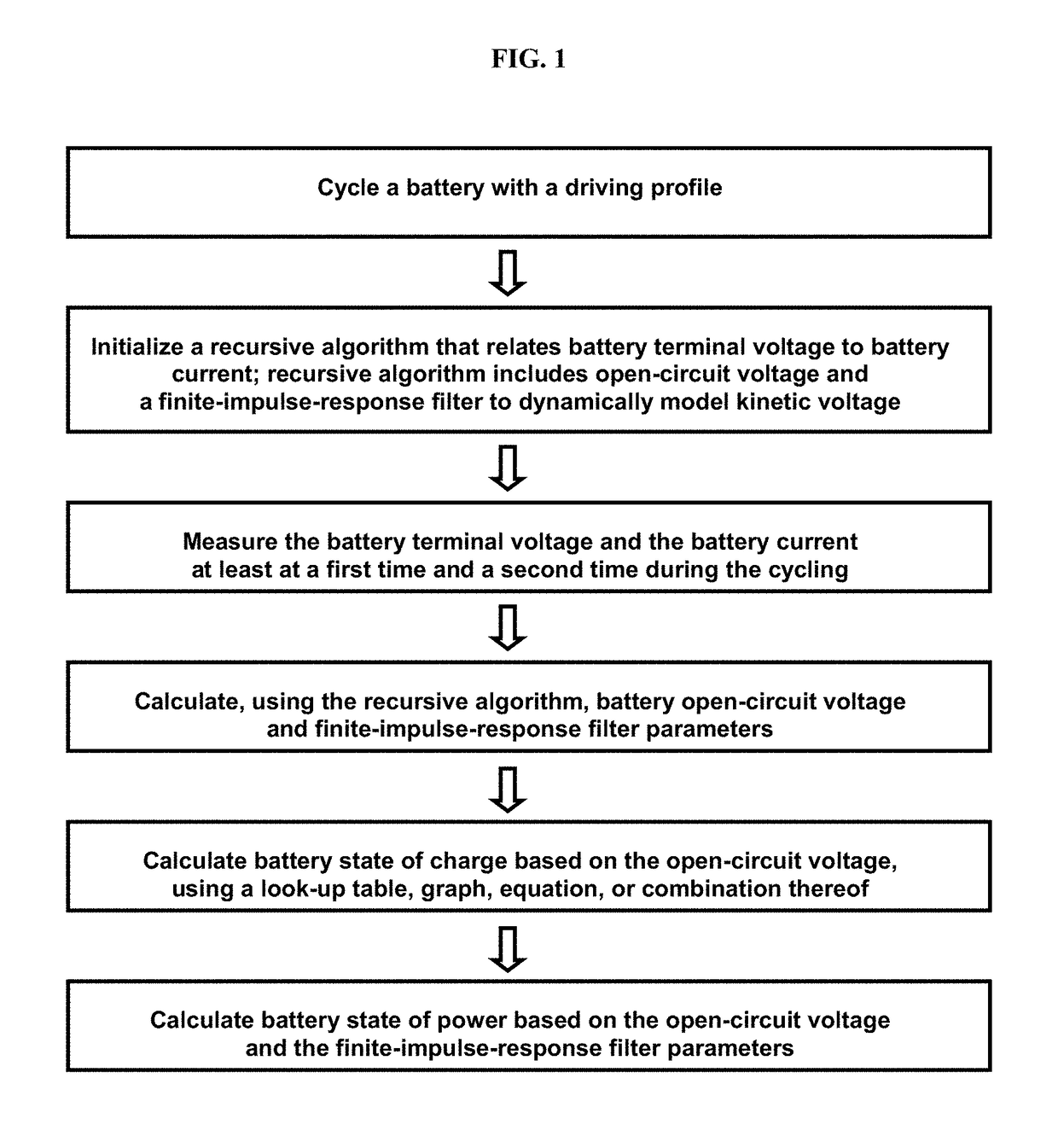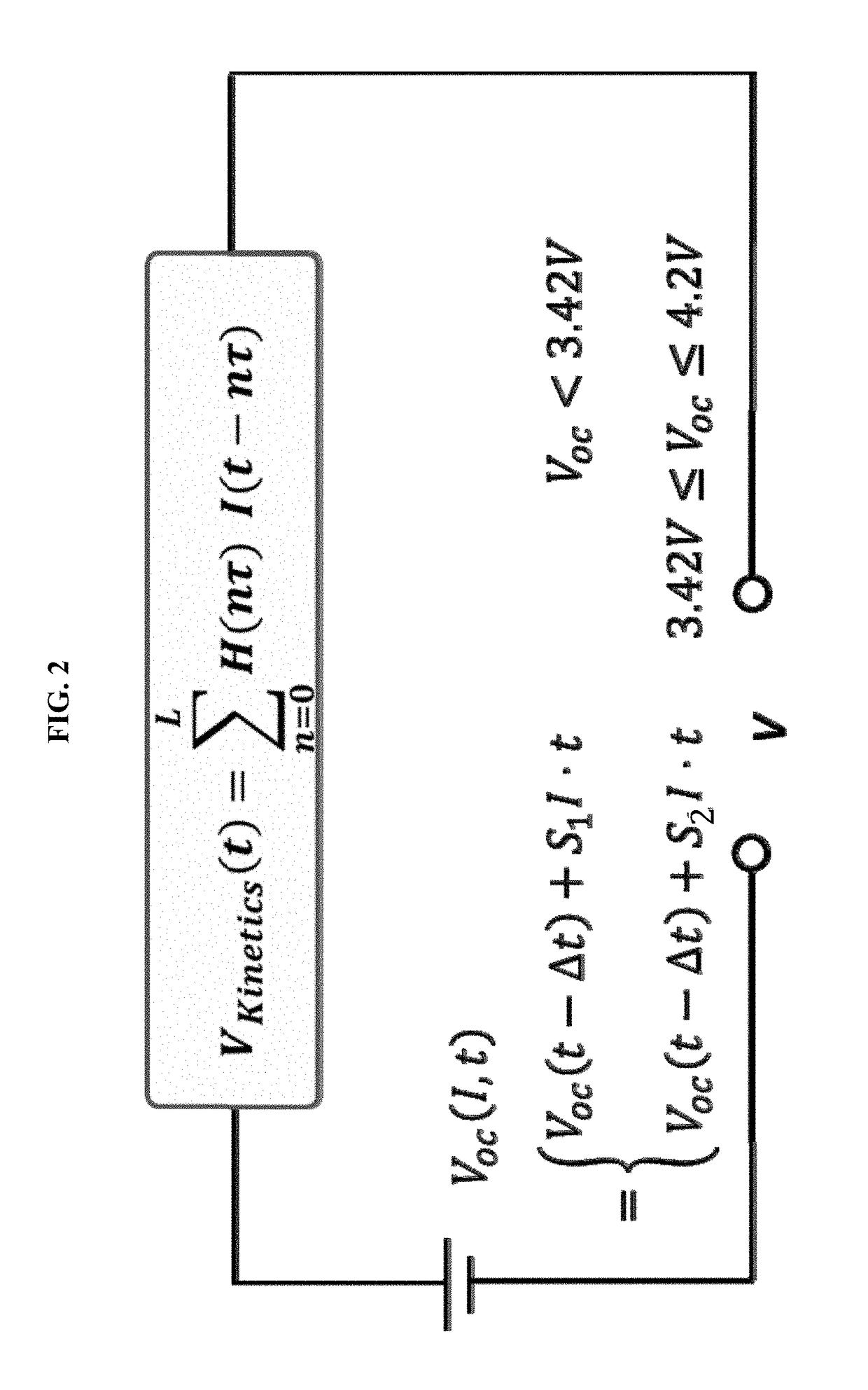Methods for on-line, high-accuracy estimation of battery state of power
a battery state and high accuracy technology, applied in the field of real-time characterization of electrochemical systems, can solve the problems of difficult on-line characterization of batteries or fuel cells in vehicles, difficult prediction of sop, general non-applicability of on-line applications, etc., and achieve the effect of improving the stability of the method
- Summary
- Abstract
- Description
- Claims
- Application Information
AI Technical Summary
Benefits of technology
Problems solved by technology
Method used
Image
Examples
examples
[0155]The battery used in these Examples is a single-cell lithium-ion battery which has a nominal capacity of 5.0 Ah and a voltage range of 2.7 to 4.1 V. A software program coded with MATLAB® is written to carry out calculations. The method is implemented and integrated with a Hardware-in-the-Loop (HWIL) battery testing system. The main facilities include a single-channel tester (BT2000, Arbin Instruments, College Station, Tex., US) that provides up to 5 kW at potentials between 0.6 V and 5 V±1 mV and current ranges up to 1 kA±10 mA, and a thermal control chamber (Test Equity, Moorpark, Calif., US) for accommodating the lithium-ion battery with a programmable range from −40° C. to 130° C. (±10° C.) in a thermal chamber. A PC computer communicates with the tester to initiate the specific driving profiles, and to receive the I-V-T response measured from the battery. The communications between the above-mentioned modules are realized with TCP / IP protocols. The temporal jitter of the re...
PUM
 Login to View More
Login to View More Abstract
Description
Claims
Application Information
 Login to View More
Login to View More - R&D
- Intellectual Property
- Life Sciences
- Materials
- Tech Scout
- Unparalleled Data Quality
- Higher Quality Content
- 60% Fewer Hallucinations
Browse by: Latest US Patents, China's latest patents, Technical Efficacy Thesaurus, Application Domain, Technology Topic, Popular Technical Reports.
© 2025 PatSnap. All rights reserved.Legal|Privacy policy|Modern Slavery Act Transparency Statement|Sitemap|About US| Contact US: help@patsnap.com



